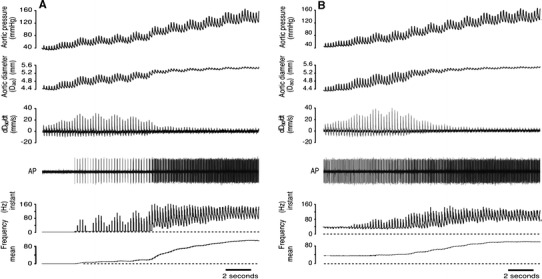Fig. 4.

a Record from a type A baroreceptor. The fibre is silent below Pth, then firing commences in systole. At higher pressures the aorta becomes stiffer such that pulse-linked fluctuations in diameter and its rate of change (dDao/dt) are reduced. These changes in circumferential wall strain are accompanied by the appearance of diastolic firing. AP Action potentials recorded from a single baroreceptor fibre separated from the left aortic depressor nerve. b Record from a type B baroreceptor, from the same animal as the fibre in a. This fibre fired relatively steadily and continuously at ~30 Hz until Pth was reached (at the 10th cycle). Below Pth, a small reduction in firing rate occurred early in systole. At Pth a distinct systolic peak in firing appears, and mean firing rate increases as pressure increases further. This particular fibre fired during both systole and diastole at all pressures examined, which was not typical of a majority of fibres regardless of their type
